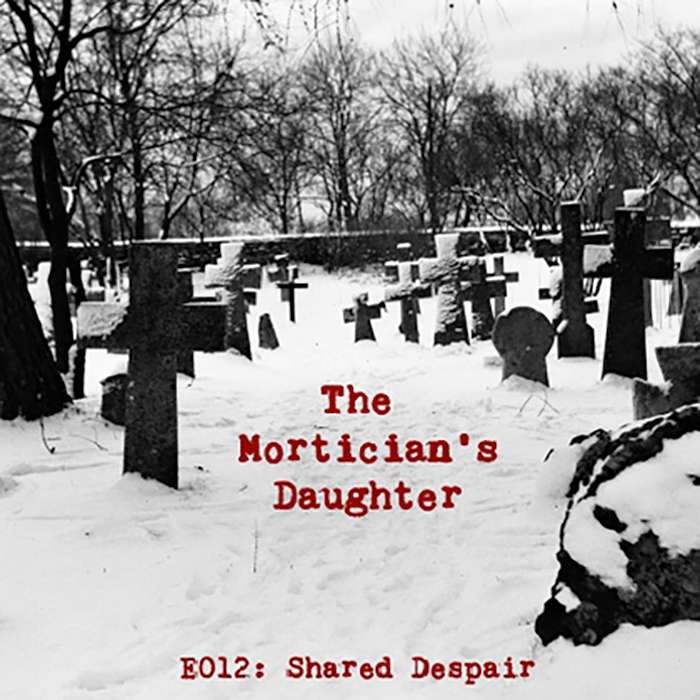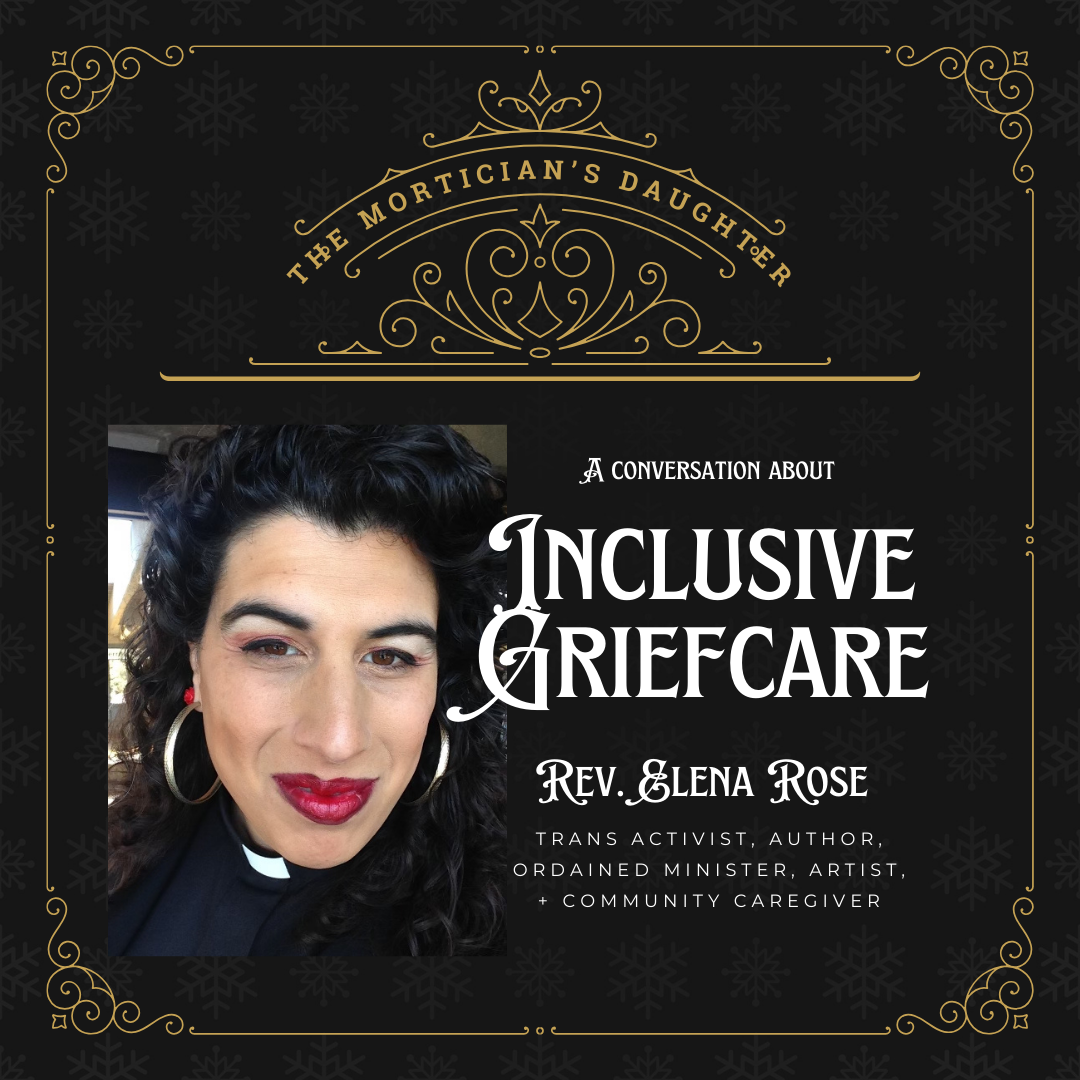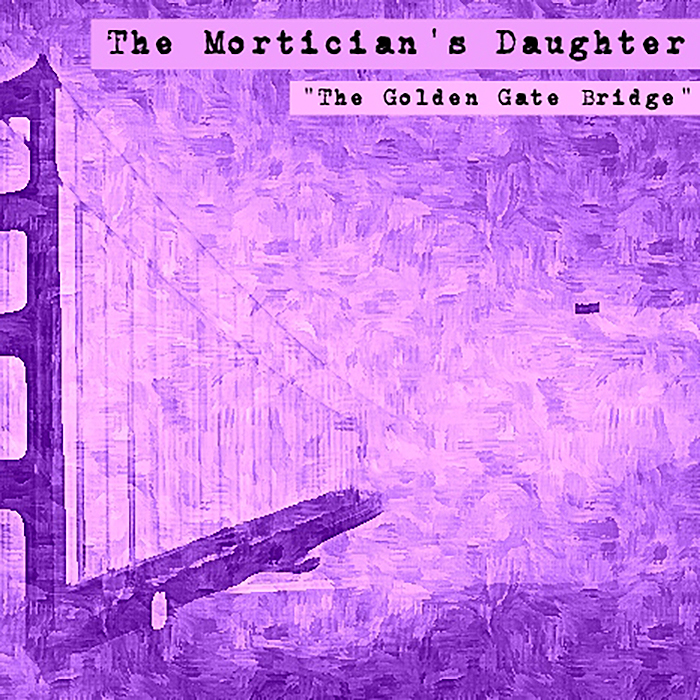Episode Transcript
Welcome back to The Mortician’s Daughter. Or, if this is your first time listening, hello! I’m your host for the evening, Dana Stern, and I’m super excited to be your tour guide for the upcoming journey. Remember, keep your hands inside the bus at all times and no one gets cursed…
Now, I started working in deathcare just this past year, but I’ve already learned a lot about the funeral industry. Like, how many people have human cremains in them and what sacred repose means. And that yes, glass coffins are a very real thing. I also learned to always look for Attila at funeral industry conventions because he has the sweetest rides, or, fanciest hearses.
So it seems fitting that I’m sitting in today for Carly to talk about tombs. Specifically, cursed tombs. Buckle up kids, we’re going global with this one.
Okay, let's dig into it and go back in history - like way back - all the way to Ancient Egypt and the Valley of the Kings. Back then, between the 16th and 11th Century BCE, to be specific, this Valley was The Spot for burying Pharaohs. That’s a good five hundred year stretch.
It was in the Valley of the Kings where the tomb of King Tutankhamun, or King Tut, was discovered in 1922.
Maybe you’ve heard of the Curse of the Pharaohs? Or maybe the Mummy’s Curse? These tales originated in the Valley of the Kings, and with good reason. Egyptologists who visited the area often returned to their homelands with stolen goods, tragic stories, and a run of bad luck that had them ready to toss their treasures into the ocean.
Now, it’s interesting to note that curses written upon pharaohs’ tombs are not actually all that common. In fact, scholars have suggested that curses weren’t often written on or in Egyptian tombs because it was considered unnecessary. That’s because, like many people today, Ancient Egyptians believed that desecrating a grave is generally a bad idea, one that might upset the gods, or the ghosts, and bring on a whole heck of a lot of bad luck, up to and including death.
And that idea has moved throughout human history. In 1699 CE a man named Louis Penicher recorded an account of a Polish traveler who decided to buy a couple of mummies when visiting Alexandria. On the journey home, the traveler started ghastly, ghostly visions of two phantom visitors. The visions persisted until he had the mummies tossed overboard into the ocean.
Another famous archeologist, Zahi Hawass, claimed that in his younger days, he had to transport items from Kom Abu Billo, a dig site located outside Tarrana in Egypt. On that same day, his cousin died, which sounds like an awful coincidence.
But then the following year, his uncle died on that same day. And the year after that, it was his aunt who marked the transgression date by dying too.
Years after these unfortunate events, Hawass found the following inscription on a tomb in Giza: “All people who enter this tomb who will make evil against this tomb and destroy it may the crocodile be against them in water, and snakes against them on land. May the hippopotamus be against them in water, the scorpion on land."
I bet he wished he started with that tomb before he went around taking stuff from different historical sites. Maybe then he would have known that bad things follow the desecration of a grave space.
Okay, I feel I should point out that this was not the only time this particular Egyptologist made claims that his work was following him home. Two child mummies he removed from their place of rest to give to a museum haunted his dreams until he brought their mummified father to that same museum. Only when the mummy family was reunited did his frightening dreams stop.
As noted, this comes to us from Zahi Hawass who went on to serve as the Minister of State for Antiquities Affairs.
Of course, it’s the tomb of King Tut that has inspired so many stories about curses and mummified monsters. King Tut’s tomb was discovered, intact, in the Valley of the Kings by Howard Carter in 1922. I will add that Carter himself believed the stories were nothing but superstition.
Others involved in the excavation felt different, however, and the rumors persisted.
George Herbert, the 5th Earl of Carnarvon, who financed the operation, cut himself shaving on a mosquito bite shortly after the discovery. Then he died from blood poisoning as a result of this seemingly insignificant injury.
You see, once the tomb was discovered and opened, the archeologists were supposed to wait for an official from the Egyptian Department of Antiquities before entering, but according to some accounts, Howard Carter, Lord and Lady Carnarvon, and Carter’s assistant snuck into the tomb that same night. They even went so far as to enter the inner burial chamber.
These stories inspired writers like Sir Arthur Conan Doyle and Louisa May Alcott to write their own stories. And then between the media hype and the rising popularity of tales about the “Curse of Tutankhamun” these stories became legend. However, according to Wikipedia, “A study showed that of the 58 people who were present when the tomb and sarcophagus were opened, only eight died within a dozen years.”
Hardly an effective curse, if you ask me. I mean, that’s less than 14% of those present at the opening of the tomb.
Besides, King Tut’s tomb doesn’t actually bear any inscriptions for curses and Howard Carter himself thought the rumors were a bunch of hogwash, except I believe he called them, “tommy-rot” and believed them all nonsense.
The deaths that have been linked to the Mummy’s Curse include George Jay Gould I who died from fever shortly after visiting the site in 1923, the same year the Earl of Carnarvon died. Another member of Carter's team, A.C. Mace, died in 1928, and Richard Bethell, Carter's personal secretary, died in 1929 from what was suspected to be smothering. Oof. Howard Carter himself, the famed archeologist who opened the tomb, died 16 years later from Hodgkin's disease at the age of 64.
Nevertheless, the stories persist and have continued through to our present day. We need look no further than Hollywood to find examples of the ongoing fascination with curses from ancient Egypt.
In 1932, Universal Studios released The Mummy and then The Mummy's Hand in 1940. The Mummy's Tomb in 1942, The Mummy's Ghost and The Mummy's Curse in 1944, and then Abbott and Costello Meet the Mummy in 1955.
Universal went on to make the Pharaoh's Curse in 1957, The Curse of the Mummy's Tomb in 1964, and The Curse of King Tut's Tomb in 1980.
And the fun doesn’t stop there. Who can forget the 1999 classic, The Mummy, starring Bredan Fraser and Rachel Weisz? That film re-launched the franchise and two more films followed: The Mummy Returns and The Mummy: Tomb of the Dragon Emperor.
Of course, we also have the spinoff series that follows, starring Dwayne “The Rock” Johnson as The Scorpion King. This series takes place in ancient Egypt and follows the origin story of the fictional Mummy back when he was, you know, alive. Last I checked, which is right before recording this, there were SIX movies about The Scorpion King.
And, finally, there was another Universal movie, this time starring Tom Cruise, that was released as part of the studio’s Dark Universe move, but this time, The Mummy was both a critical and commercial flop.
Keep in mind that these are just the Universal Studios pictures. Other studios released other films and there’s also been a lot of overlap between cursed tombs and popular cinema. Take Indiana Jones, for example. Howard Carter appears, as a character, in two films from this series. Carter actually makes a lot of appearances in film and literature because of his 1922 discovery.
One of my favorite parts of the stories that emerged about Howard Carter and his King Tut entanglement is set very shortly after his death. It would appear that Carter absconded quite a number of treasures from the tomb that probably should have been left behind. Not because of a curse, but because stealing ancient artifacts is wrong. As Indiana Jones would say, “This belongs in a museum.”
So, Carter secretly pockets from prizes for his personal collection, then he dies and people find them during probate. Another Egyptologist, Henry Burton, was assigned the role of executor of Carter's estate. When Burton found these 18 ill-gotten antiques, there was concern this could have an affect on the relationship between England and Egypt. Rather than returning them, they matriculated into the Metropolitan Museum of Art. It was the museum that eventually returned the objects to Egypt.
So, most of the scholars who worked on these ancient sites were dismissive of the curse mythology, but the stories remain. Other theories have arisen about the “bad luck” of tomb raiders. Perhaps ancient bacteria or toxic fungus spores might be the reason behind the poor health and early deaths of individuals attached to these archaeological sites.
And we have another cursed tomb to help us substantiate the whole deadly-spores theory. This one comes from Poland this time.
The Tomb of Casimir IV Jagiellon in Kraków is considered a gothic masterpiece. Casimir IV was the King of Poland and Grand Duke of Lithuania who was placed in his tomb back in 1492. In 1505, his wife, Elizabeth of Austria, was placed in the tomb as well.
And in that tomb they rested undisturbed for nearly 400 years. But, in 1973, the tomb was opened by a team of twelve that were set to begin conservation work. Ten of those men died shortly thereafter. Now, that’s more than 80% of the participants - sounds like a curse to me.
The media took on the case and soon the “Jagiellon Curse” became a thing of notoriety. This time, however, a microbiologist decided to investigate and found a toxic fungus, one linked to some very serious conditions of the liver as well as being highly carcinogenic. The conservation team inhaled these toxic spores during the restoration project and subsequently died.
Maybe that’s the curse working itself out or just plain bad luck. I’m not here to tell you which one to believe.
Now, the Grave of Seath Mor in Scotland is recognized as another cursed burial place. This grave, however, doesn't wait for people to open it before bestowing curses. The grave belongs to a clan chief of the Highlands, Seath Mor Sgorfhiaclach, who was also known as The Great Shaw.
Ghostly visions and "elf-like spirits" have been spotted in the place where Seath Mor is buried, but it’s not the specters that captured everyone’s attention. No, I’d say the most interesting thing about this grave is its iron cage. Yep, the grave is encased by an iron cage.
Supposedly, the cage is not meant to keep the ghost of this long-dead ruler in the ground, but to keep unsuspecting visitors from touching the five cursed stones on top of the grave.
The cage wasn’t actually put in place until 1983. That’s a long time for cursed stones to be hanging around all willy-nilly as the list of victims continued to get longer. Once, an English footman tossed one of the stones into a river. He was found dead in that same river a few days later and the stone was back on the grave. Another time, a journalist lifted up a stone briefly and was killed in an accident afterward as he continued his journey. There are other stories of illness and death in connection to this grave. Enough, I guess, to warrant an iron cage around the grave and its cursed stones to protect passersby.
The guardian spirit of the Shaws is known as the Bordach an Duin and some suspect that is the creature who guards the grave, wreaking havoc on those who attempt to disturb it.
Well, it seems like whether or not the grave bears the inscription of a curse doesn’t seem to matter. Tombs are not to be tampered with, in my opinion.
But there are reasons for tomb-tampering.
Grave-robbing is a big one, right? Leave a curse for anyone who is going to steal the stuff you planned on taking with you into the next world, right? Another reason people don’t think about quite as often is actually far more prevalent - Reusing the Grave.
Yessir, grave spaces are often opened and reused because, well, cemeteries run out of room. Take New Orleans, for example. The city sits along the Mississippi River and has a long and tangled history. In 1718, French colonists staked their claim and named it New Orleans where the city soon became the capital of the French territory. The city then became part of the United States after the Louisiana Purchase in 1803.
Now, here’s where the trouble comes in. You see, the water table is very high here which means you can’t dig into the ground very far before hitting water. That’s bad for graves. Burial plots have to be shallow or above ground in New Orleans in crypts and mausoleums because of the water level.
When you add the water troubles and the centuries of history with the limitations of available land, we have an area where burying the dead, and keeping them buried, is a real issue. That’s why the city allows for multiple placements in the same tomb. In fact, families often share a tomb with the newly deceased being placed where their relatives have made room through decomposition.
There are even Society Tombs, like, for people who belong to the same society. Bird-watching society? You can share a grave. New Orleans Typographical Union? They share a grave. Sometimes these tombs have the names of all its occupants engraved on it, but frequently, those stone engravings were a little too costly and the individual placed has nothing to mark their final resting place as theirs.
Maybe that’s why New Orleans is considered one of America’s most haunted cities. All those desecrated tombs riling up resting ghosts. Maybe it’s not the shared graves, per se, but the number of displaced corpses… like all the remains that were dug up when the city was constructing its famed Superdome. Yes, the stadium was built where Girod Street Cemetery once stood, abandoned.
Anyone who’s ever seen Poltergeist should know of the dangers in doing something like that, but Saints’ fans swarm the building, fearless.
Rafi Kohan goes into all this, and a whole lot more, in his book, The Arena: Inside the Tailgating, Ticket-Scalping, Mascot Racing, Dubiously Funded, and Possibly Haunted Monuments of American Sport.
So, we went from the Pharaoh’s Curse in Egypt to toxic spores in Poland to the Scottish Highlands for an iron-gated grave to the City of New Orleans. Who knows where we’ll go the next time we meet up?
If you want to show us some support, please subscribe to the podcast and follow us on Instagram and Tiktok - @morticiansdaughterpod - please and thank you.
Well, I’m Dana S. and that’s it for me this time around. It’s been super boss traveling this world of tombs and their curses with you. So what do you think, do you believe in the mummy’s curse? Me, I don’t mind tempting fate. My black cats and I might walk under some ladders, break a few mirrors… you know, just to see! Fingers crossed that I’ll be back to share some more tales both weird and wonderful. Hmm, my force field is pretty solid, I have a feeling I’ll be just fine… stay cool ghouls!


